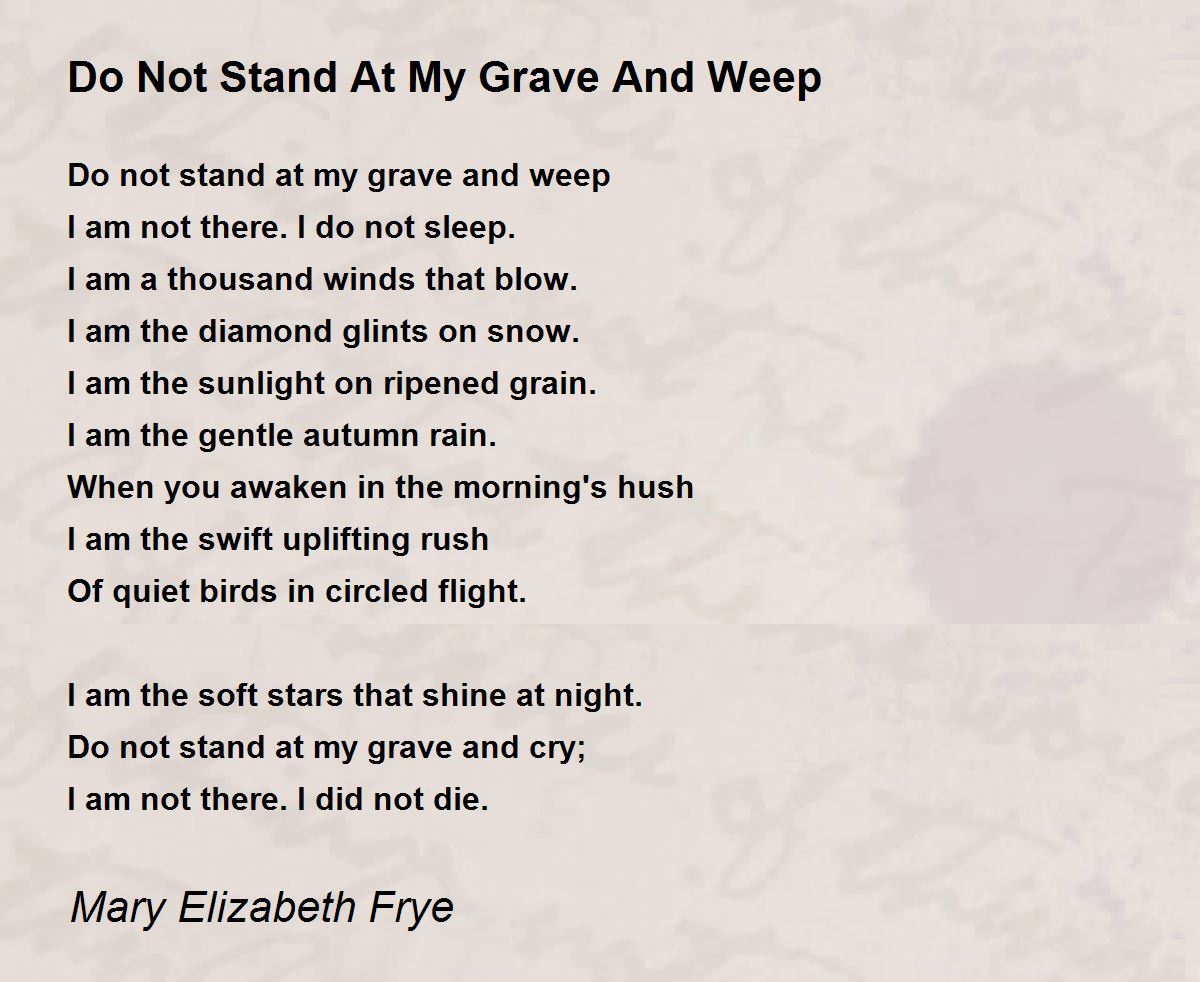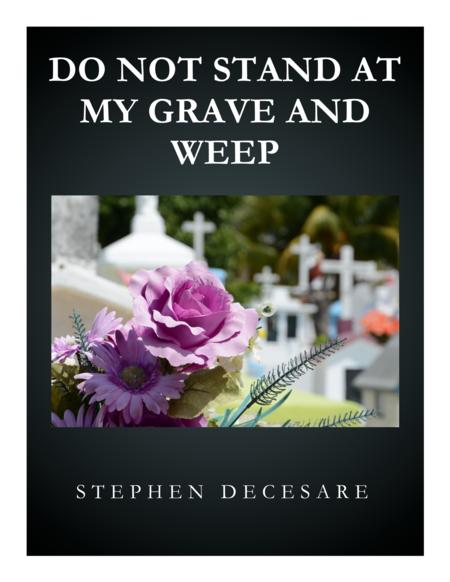




In print, however, Dear Abby columns by Pauline Phillips and her daughter Jeanne consistently treated authorship of the poem as an unsolved mystery. Frye," Dear Abby author "Abigail Van Buren" researched the poem's history and concluded in 1998 that Ohio native Mary Elizabeth Frye (Novem– September 15, 2004), a self-employed florist and amateur poet, who was living in Baltimore at the time, had written the poem in 1932. According to the London Times obituary for the "Baltimore housewife Mary E. Shull first publicized the claim for Mary Elizabeth Frye's authorship in a newspaper column for the Indianapolis News on 9 June 1983. In 1981, newspaper columnist Bettelou Peterson identified the author for enquiring readers as "the late Clara Harner Lyon, of California." Later many other claimants to the poem's authorship emerged, including attributions to traditional and Native American origins. Interest surged after the poem was read as a graveside eulogy by actor Harold Gould in the 1979 NBC TV movie Better Late Than Never. Kansas native Clare Harner's original poem "Immortality" was reprinted from The Gypsy in the Kansas City Times on 8 February 1935. Each line is in iambic tetrameter, except for lines five and seven, the fifth having an extra syllable, the seventh, two extra. It is in nature's pattern that we live a certain number of years and if we make use of every moment to be the best of whatever we choose to be, then there should be no fear of the unknown of what follows when life is over.Īs shown below, in December 1977 the supposedly "anonymous poem" was read by John Wayne at the funeral of film director Howard Hawks.The poem is twelve lines long, rhyming in couplets. This poem, by Clare Harner Lyon, is well known and has been quoted in various publications for more than 30 years and was recited as a eulogy at the burial of movie star John Wayne. Since the victims no longer can feel pain, the ones who grieve are the ones who are left behind and suffer a loss. Poem to ease the pain This is an attempt to ease the pain, if only in a small way, of the families of those who lost their lives in the recent plane crash. Ireland, "uplifting" replaces "up-flinging" and the line "I am the soft stars that shine at night" replaces "I am the day transcending night" in the original 1934 text of Clare Harner's Immortality. In this 1988 letter to the editor of the Escondido CA Times-Advocate, Margaret Ireland correctly identified Clare Harner Lyon as the author of the popular bereavement poem "Do not stand at my grave and weep." Among other changes in the version quoted by Ms.


 0 kommentar(er)
0 kommentar(er)
